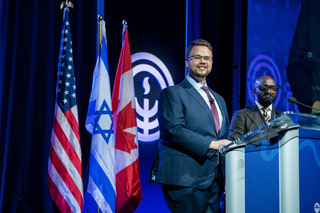
By Solomon O. Smith, California Black Media
Hanukkah, one of the most visible holidays of the Jewish faith, is right around the corner.
As much as the public may be aware of Hanukah, many Californians don’t understand the basics of this holiday, which will be celebrated by millions around the world for eight days beginning the evening of Sunday, Dec. 18 and ending the evening of Monday, Dec. 26.
Origins of Hanukah
Hanukkah began with a war and a miracle, according to Rabbi Isaiah Rothstein, a rabbinic scholar and Black Jewish leader in the Jewish Equity, Diversity & Inclusion program of the Jewish Federation of North America, or JEDI.
It marks the freeing of Judea by the Jewish freedom fighters called the Maccabee over the Assyrian-Greek occupiers more than 2,300 years ago. After recapturing the Holy Temple in Jerusalem which had been desecrated by the occupiers, the freedom fighters searched for oil to light the Temple menorah as part of the rededication of the temple. They found a single day’s worth of fuel, but it miraculously burned for eight days before being resupplied.
“So, there’s a combination of things in the holiday, which is really celebrating that the oil lasted longer, and also the War of the few against the many,” said Rothstein “And then, the over the last 15 or 20 years, many other themes have come into being, like light over darkness.”
By many, the holiday is referred to as the “festival of lights” and is celebrated on the 25th of Kislev on the Hebrew calendar. Because the Hebrew calendar follows the lunar cycle, the dates of Jewish holidays change from year to year according to the Gregorian calendar. As a result, the beginning of Hanukkah can range from late November to late December.
Although often compared to Christmas, Hanukkah is not one of the High Jewish Holidays, which are considered more core to the belief system. Hanukkah is closer to Thanksgiving in tone. It celebrates the rededication of oneself to God, the faith and family.
The Celebration
The most visual part of the holiday is the lighting of the Hanukkah menorah, or “hanukkiah” in Hebrew. It holds eight candles, one for each day of the festival, and a helper candle or “shamash,” in the center which is used to light the others. It can be made of a wide range of materials and has become a symbol of the faith.
Many communities have large communal hanukkiah which are lit as part of an inclusive celebration. Washington, D.C. has a National Menorah and lighting festival, while New York claims the world’s largest Hanukkah menorah.
The tone of Hanukkah is not the same as Christmas which has traditionally become a holiday heavily focused on youth.
Christmas gifts are ubiquitous in the United States and the eight days of Chanukkah have also begun to include gifts.
In other parts of the world, where Jews were persecuted a quieter less public observance took root. Many in Europe escaping Nazi persecution or Russian pogroms were raised to be cautious in their celebrations according to Rothstein.
Often the very act of displaying or lighting a hanukkiah could be dangerous. It led to the lighting of the menorah to be associated with rebellion against oppression.
Some of the concepts of the menorah and lighting its candles have even influenced other holidays like Kwanzaa, some religious and cultural observers say. For Hanukkah, each candle represents a day of the holiday; for Kwanzaa, each one stands for a life principle.
A custom associated with Hanukkah is playing games with the dreidel, a small spinning top. According to Rothstein the toy was used to fool the ruling authority and hide the study of the Torah.
Another Hanukkah custom is to give money (called Hanukkah gelt) to children. Hanukkah-themed chocolate coins wrapped in gold or silver foil are used as substitute to real money gifts.
Food is a big part of the holiday. Traditional Hanukkah recipes include foods fried in oil, to commemorate the original miracle of the oil. Fried donuts and potato pancakes or latkes are a favorite. Dairy products are also popular during Hanukkah.
The People
There are about 7.6 million persons who identify as Jewish across the country, with California containing 15%, the second highest behind New York at 21% according to the American Jewish Population Project.
There are a number of national organizations that help the public understand Judaism, including the celebration of Hanukkah.
The Jewish Federation of North America provides a range of services to the community and brings together over 300 different organizations according to Niv Elis, the communications director at the Jewish Federation of North America.
“So, the Jewish Federation we’re a system that encourages Jewish communities to flourish,” said Elis. “That’s our main thing is that we think of ourselves sometimes as the backbone of the Jewish community. We’re not the entirety of it, but we support all the different parts.”
The Jewish diaspora is widespread and crosses many borders, including race. In the United States some Black members of the faith can find it to be an isolating experience.
Robin Washington’s article for NPR about being the singular Black Jewish person left in Duluth, Minnesota is just one example. He points out that there are a lot of Black Jews.
There are at least 200,000 Black American Jews. There are biracial Jews with a Jewish parent like him. Some converted to Judaism, and some belong to Black Hebrew congregations that formed at the turn of the last century.
Rothstein and his organization are working to connect to African American members and address those feeling disconnected.
“We’re building community, like every single week,” said Rothstein. “We connect with different Black Jews and Jews of color from across the community, across the country.”
This California Black Media report was supported in whole or in part by funding provided by the State of California, administered by the California State Library.


